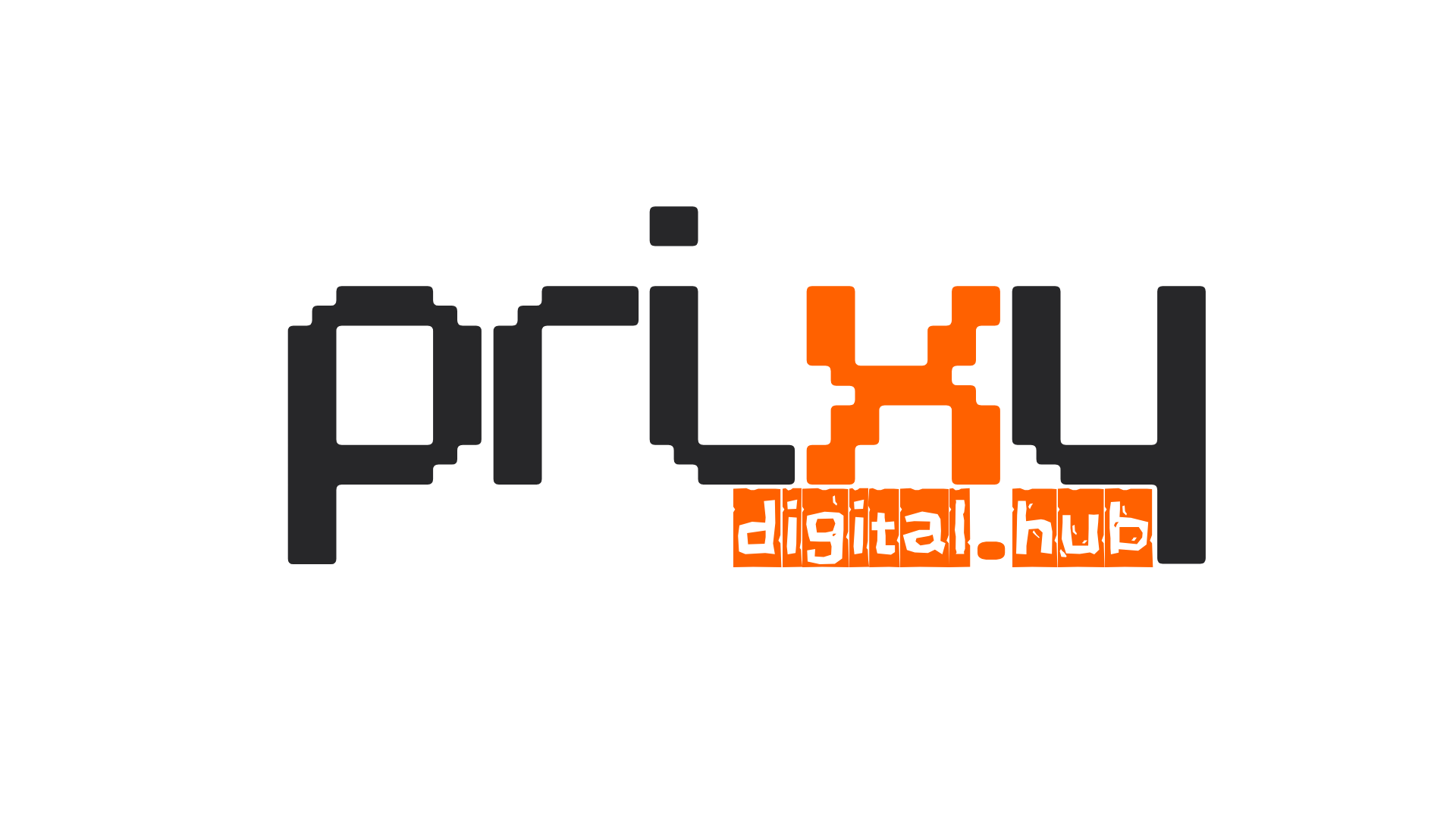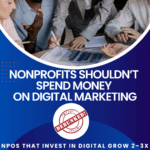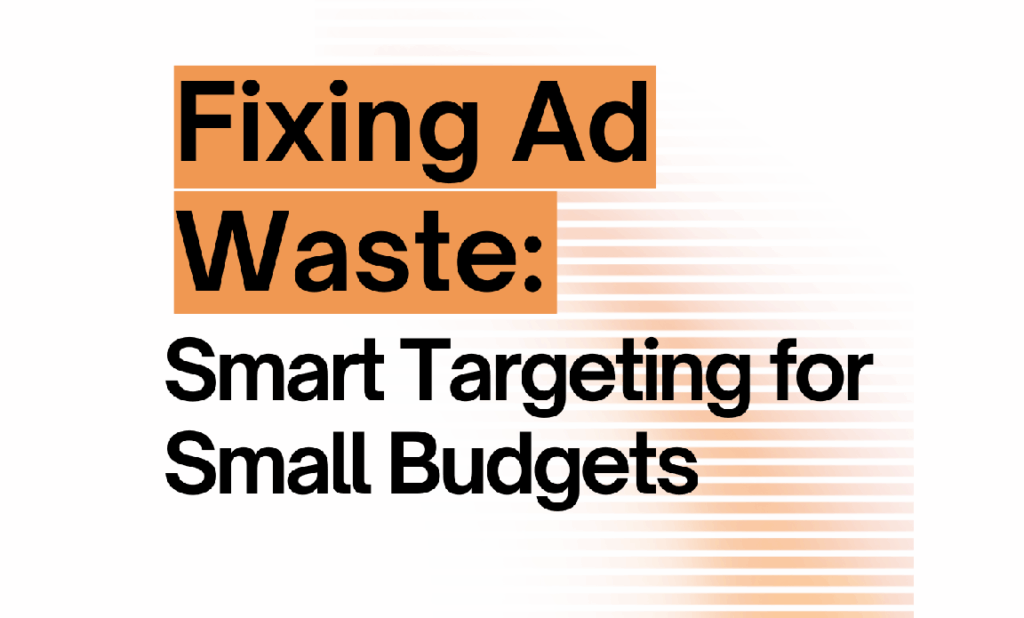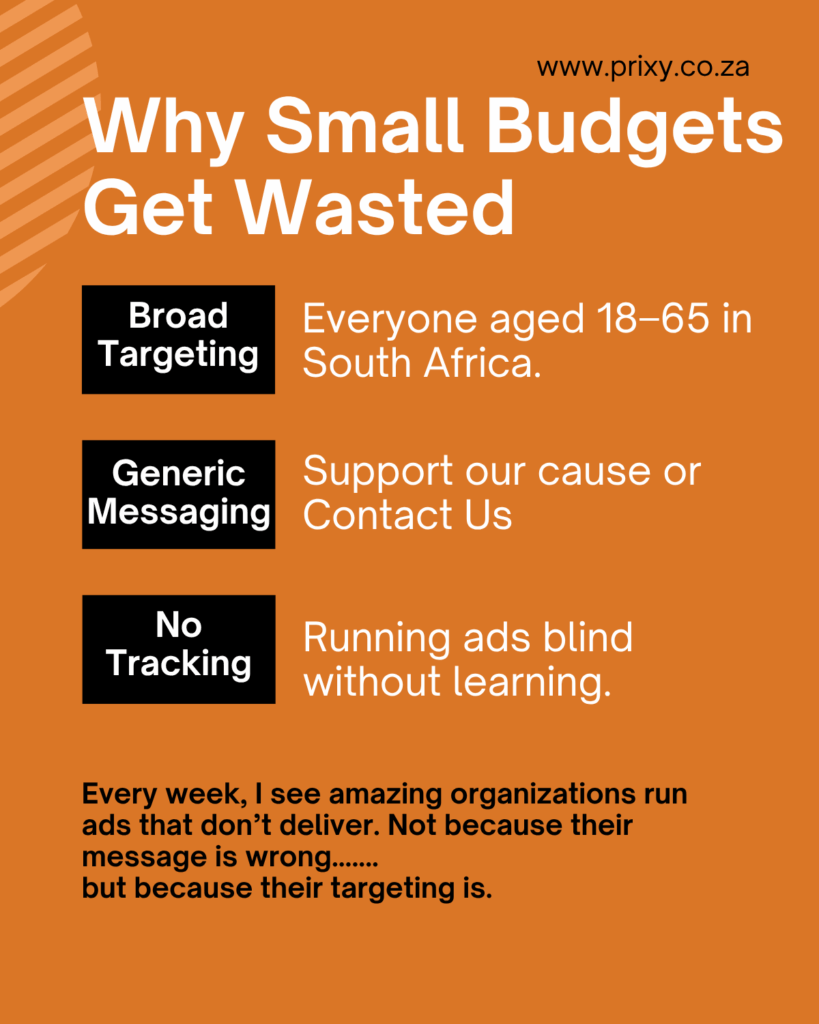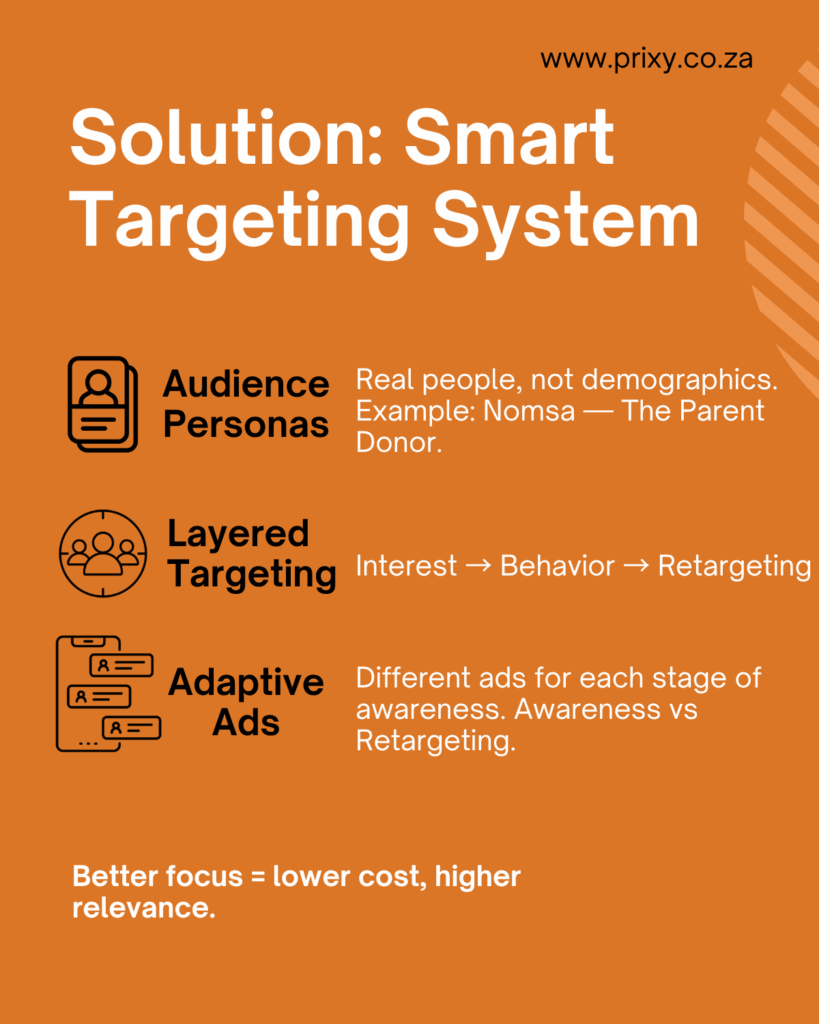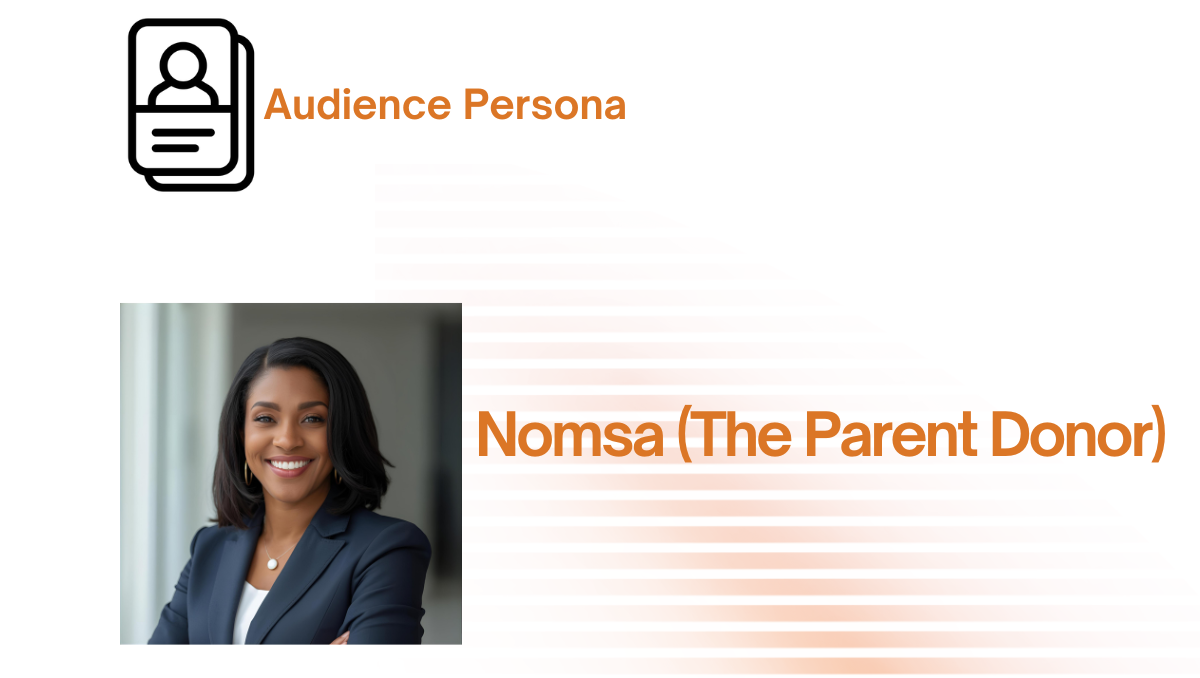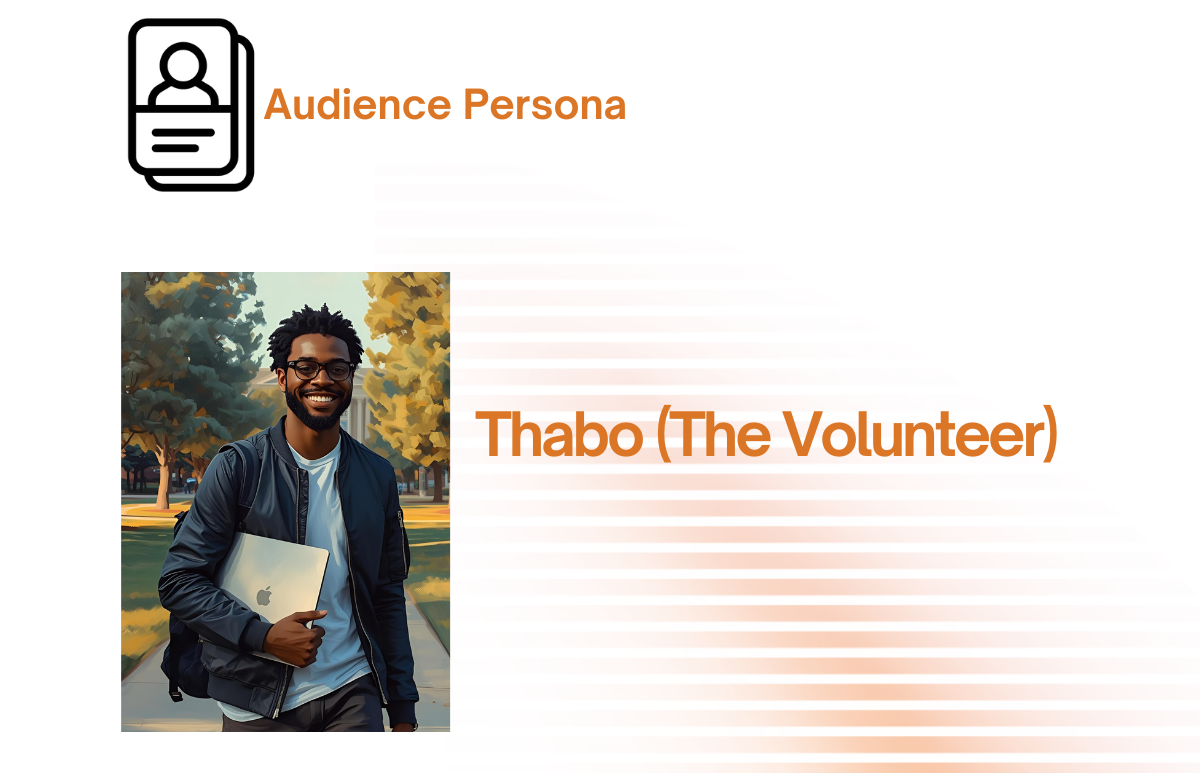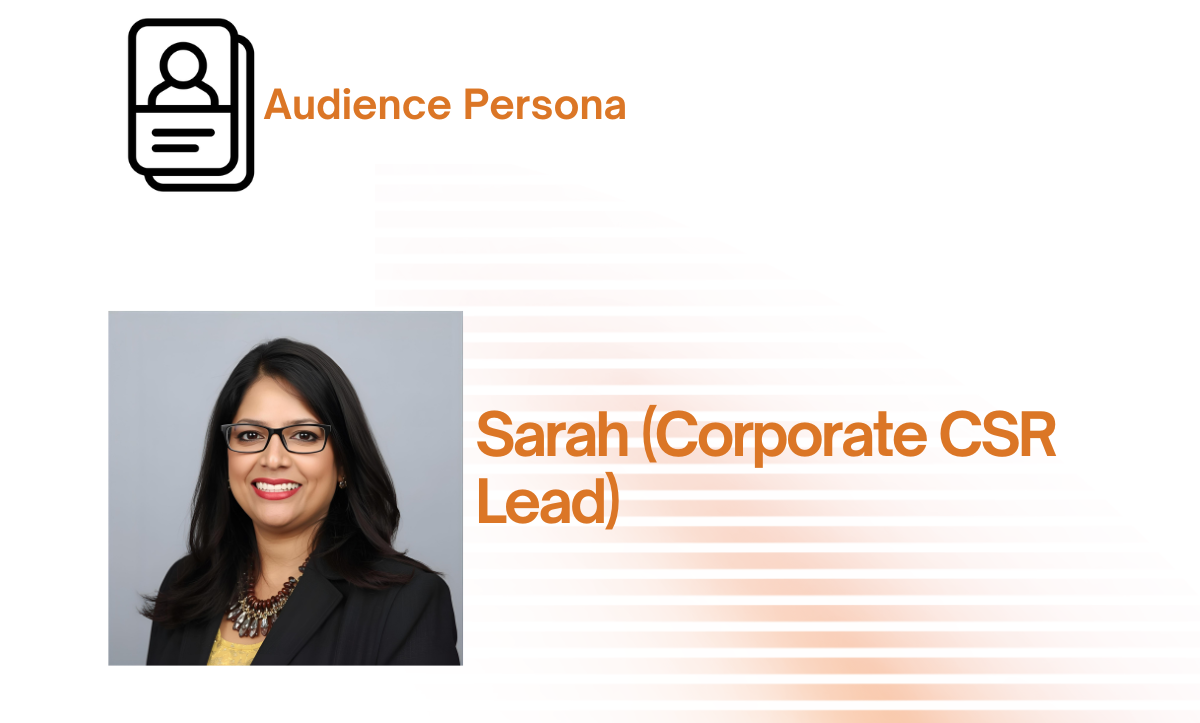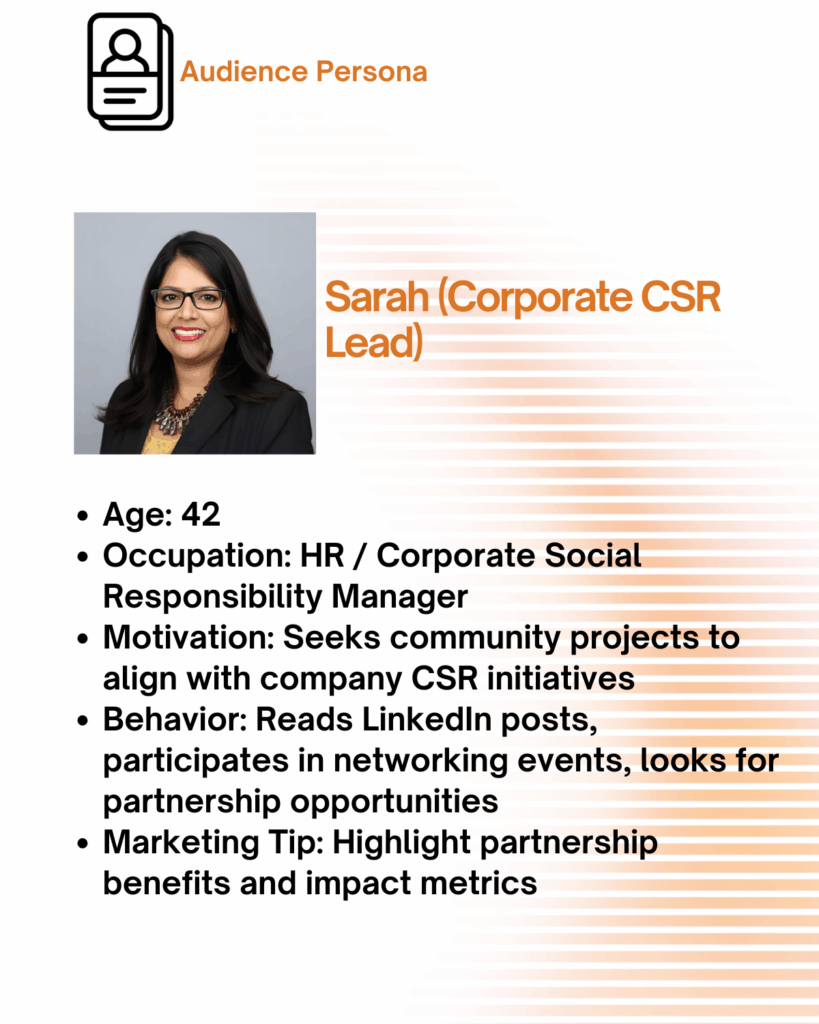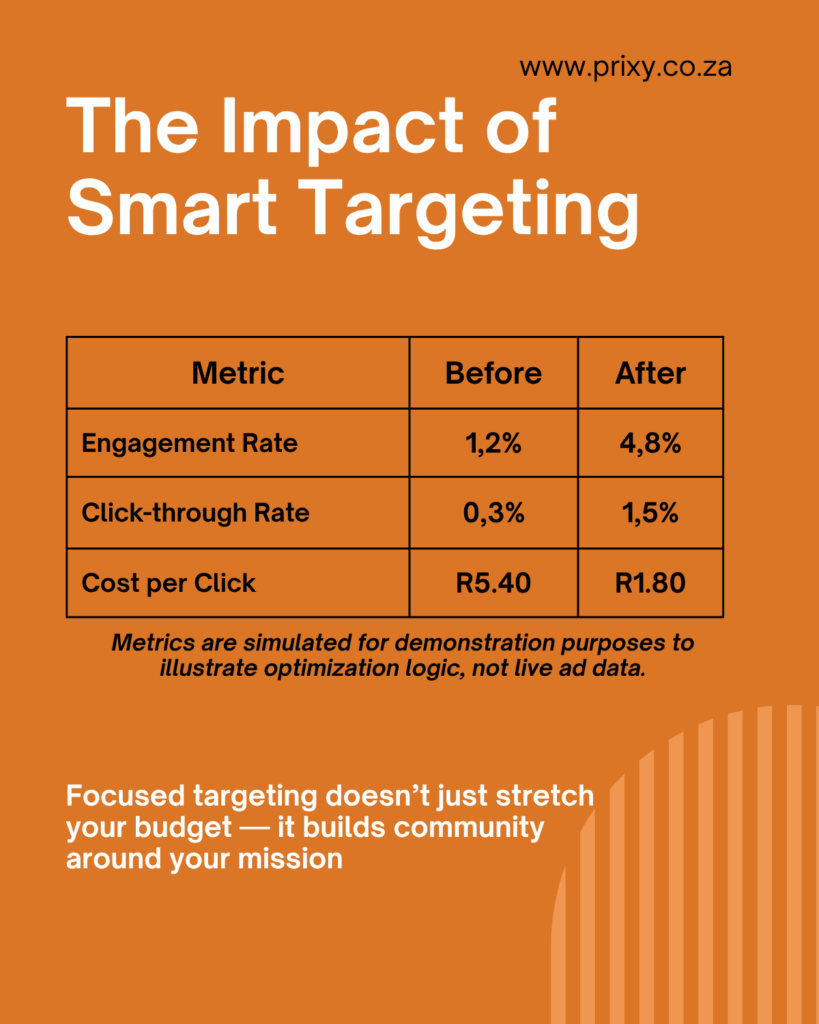The Smart Targeting Framework
Step 1: Audience Personas
Created 3 realistic personas:
Nomsa (Parent Donor): Motivated by children’s education, likely to donate small recurring amounts.
Thabo (Volunteer): Young, tech-savvy, wants hands-on community impact.
Sarah (Corporate CSR Lead): Decision-maker seeking measurable social impact.
Each persona included:
Demographics
Motivations
Behaviors
Content preferences
Purpose: Tailor visuals, tone, and CTAs to connect emotionally and contextually with each persona.
